Some of the most beautiful work of this craftsman, and many others, are in this book “Liège Gunmakers through their Work. 1800 - 1950”.
For more detail see: LIEGE GUNMAKERS
Lhermite & Bruyninck ?
This is a
relatively recent manufacture (40 or 50 years) of a percussion gun (black
powder) with rough engravings on the breech, the bridge, the cap, etc.
The
markings
EL:
provisional proof from 1852 to present day
F under
star: Controller’s countermark from 1877 to 1968.
11.0 is
almost certainly the caliber, 11 mm.
LB: One
might have thought of the gunsmaker Lhermitte and Bruyninckx but the brand of
this company is usually in an oval.
I don’t
understand why there are no other stamps, such as the peron.
The
manufacture of copies of flintlock or percussion weapons continued in Liège long
after 1860 and even after the Second World War; and this pistol is an example of
this.
The same
applies to other countries such as Spain and Italy: they are either cheap copies
or decorations, or high-quality black gunpowder guns.
GP
Lhermite & Bruyninck
Here’s a classic Anson system shotgun juxtaposed,
dating from 1925, with a grid-shaped semi-pistol stock.
The markings
AE under a star: probably the stamp of a controller, unidentified;
Lion on PV: smokeless powder test from 1898 to 1968;
ELG on star in crowned oval: accepted from 1893 to 1968;
d: Annual letter of 1925;
Peron: inspection since 1853;
EL: provisional since 1852;
Choke 18.2: choked gun, between 1924 and 1968;
1 kg 320: gun weight, in force since 1924;
ES: unidentified initials;
12-65 in coated omega: nominal caliber and length of
the casing, since 1924;
13 448: presumably the manufacturing number of the weapon;
LB in
a flattened oval: initials of barrel makers
Lhermitte and Bruyninckx.
(see also Volume 4 of Alain
Daubresse’s Liège Armouriers series). Note that we also find the
Bruyninx
script on an advertisement dating (in principle...) from 1931. These initials in
a flattened oval appear in any case in a statement of the Liège proofhouse.
The name of the Frenchman Léopold Bernard has also been
suggested, but since he was active between ca. 1823 and 1878, he is not relevant
for this rifle passed to the proofhouse of Liège in 1925.
Finally, under the breech, engraved and gilded, is
“Rêve (Dream) 3 Automatic”: either a personal engraving for the owner, or
perhaps a trademark?
We haven’t found any trace of that brand.
The Web showed us the existence of another weapon,
manufactured by the same gunners, in calibre 16, with the words “Rêve 2”
engraved in the same place, with a higher number (16345).
GP with the help of the whole team.







Lhermite & Bruyninck
It is about a shotgun to central percussion of gauge 12 of Liège manufacturing.
The unrifled bores are juxtaposed. The system is of type “hammerless”. The wood
known as “pistol” is in walnut.
The weapon carries the lawful punches of the bench of tests of Liege, namely:
ELG* in a crowned oval:
final acceptance, of use of 1893 to 1968.
12C in a rhombus:
gauge, of use of 1898 to 1924.
EL in English letters:
provisional test, of use of 1852 to our days.
Peron:
acceptance, of use of 1853 to our days.
S* and R*:
countermarks of the controllers, of use of 1877 to 1968.
Choke 17.4/18.2 and 17.7/18.2
(subject to a good reading): choke barrels, gauged in mm to 22 cm of the breech
and the mouth. In use of 1910 to 1924.
The weapon also carries the following marks:
LB in a horizontal oval:
mark of the manufacturer of guns of rifles
Lhermitte & Bruyninck in Liege.
A&R in a rhombus:
subcontractor not identified.
25499:
serial number.
37 on several parts:
number of the weapon?
PT*:
unknown subcontractor.
BS on the barrels:
mark of a subcontractor of the barrels not identified.
GG
Blois is a city of the French department of the Loir-et-Cher. In the south-west
of Paris
Alain






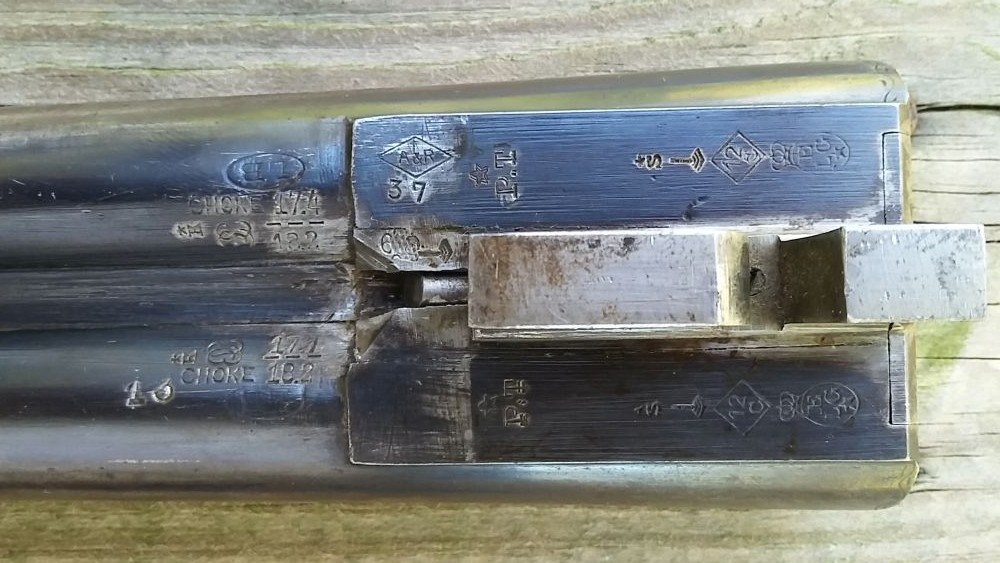


Lhermite & Bruyninck
Here is a
classic shotgun with juxtaposed barrels, external hammers and "English" stock.
It dates
from between 1910 and 1924.
The
barrels are by Lhermitte and Bruyninckx, but as for the
manufacturer......mystery !!.
Markings
ELG on
star in crowned oval: acceptance, of use between 1893 and 1968;
Peron:
inspection, of use since 1853;
Lion on
PV: test with the powder without smoke, of use between 1898 and 1968;
12 C in
vertical rhombus: gauge, between 1898 and 1924;
L under
star, x under star, AV (?) under star: countermarks of controllers, between 1877
and 1968;
EL:
provisional test, in use since 1853;
Choke
17.7 out of 18.3: choked barrels between 1910 and 1924;
P
1KG232.3: weight of the barrel, in use between 1892 and 1924;
ACLB in
circle: gunners Lhermitte and Bruyninckx (it is known that they were active in
1914);
D= 70 out
of 20.6: length of the chamber in mm and diameter in mm after the optional test
with smokeless powder, in use between 1892 and 1924.
GP
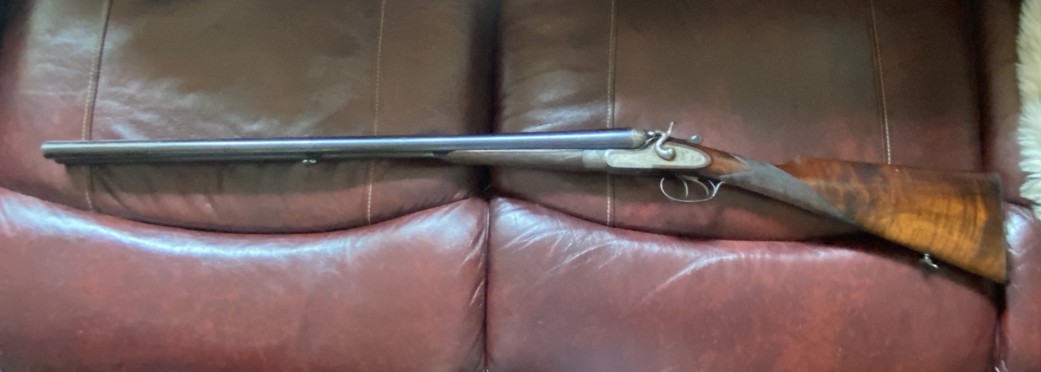
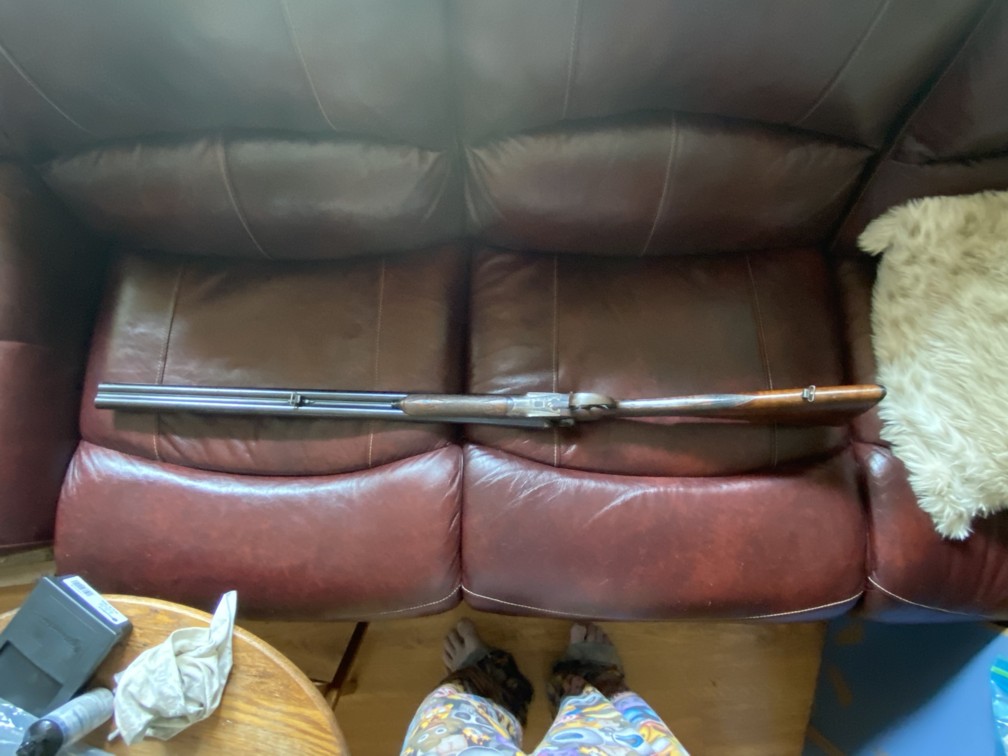
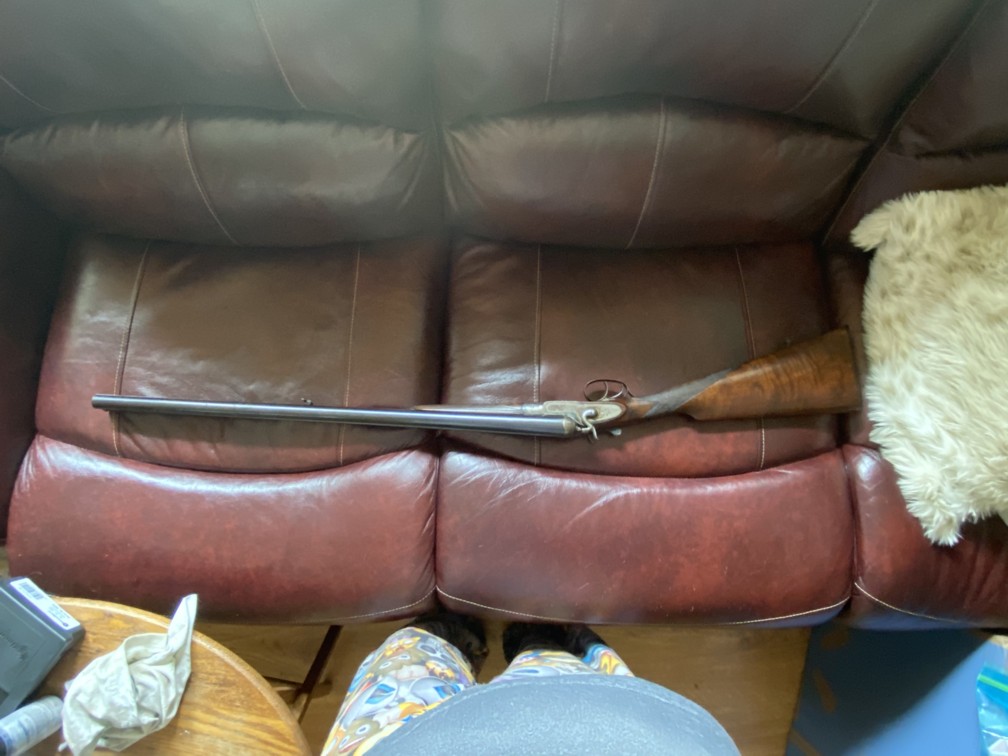
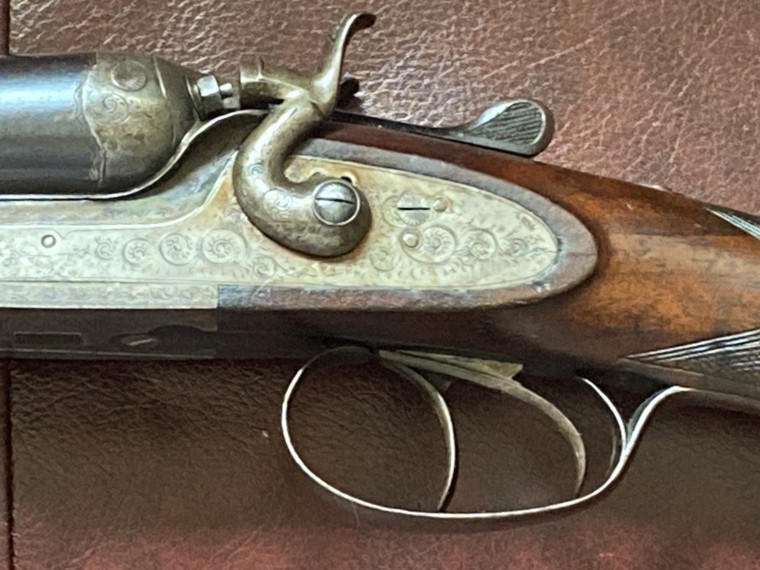
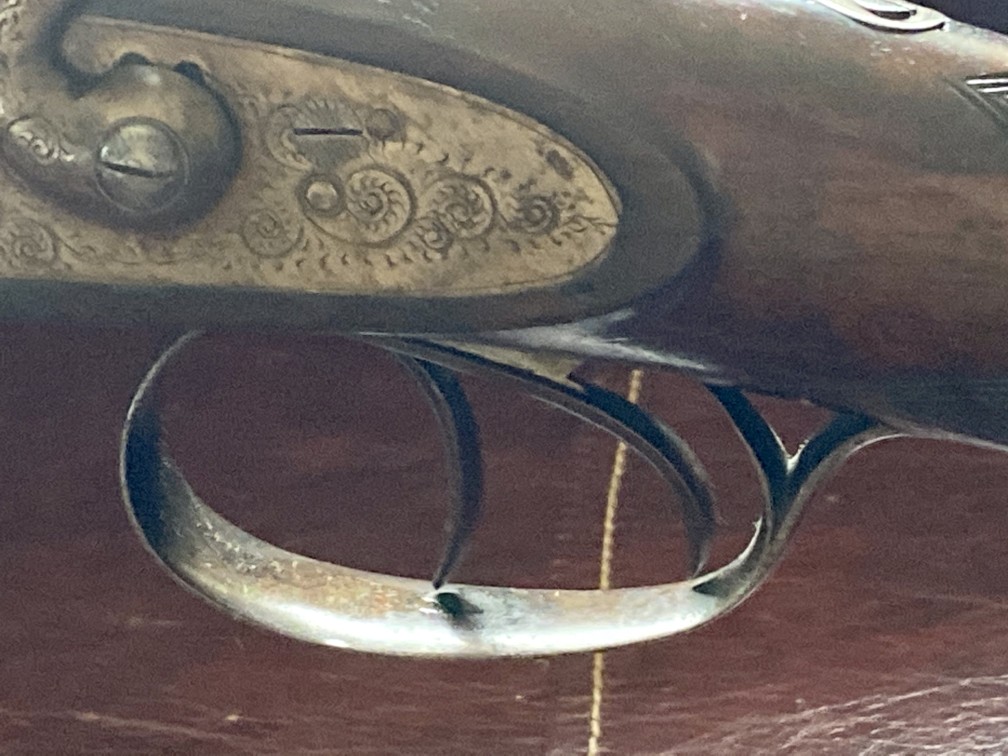
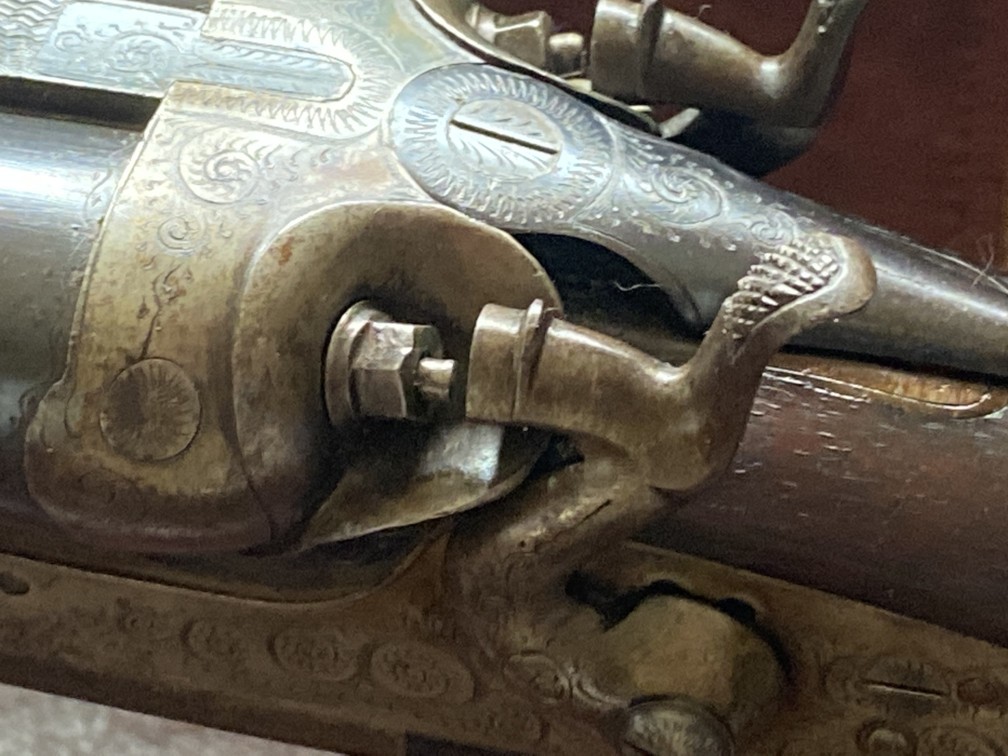
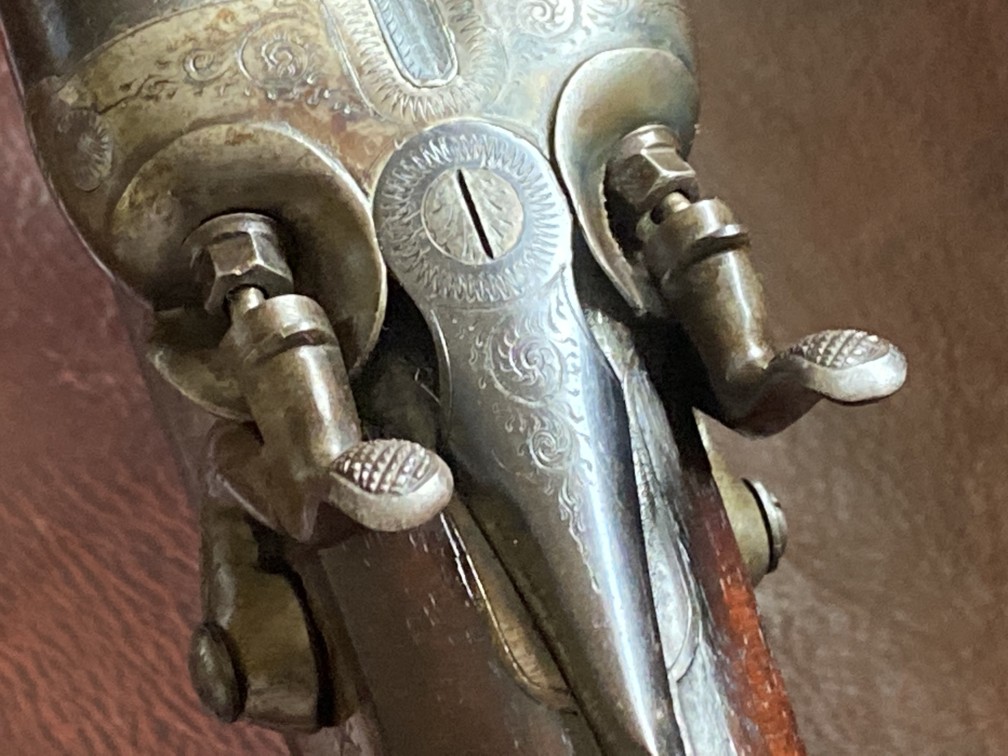
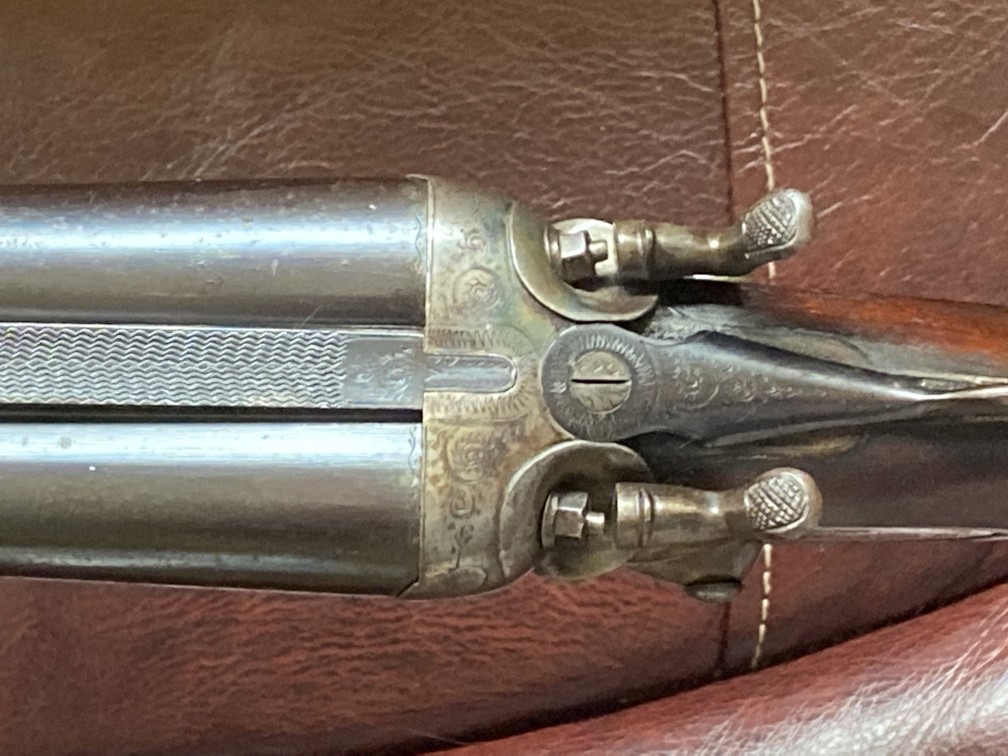
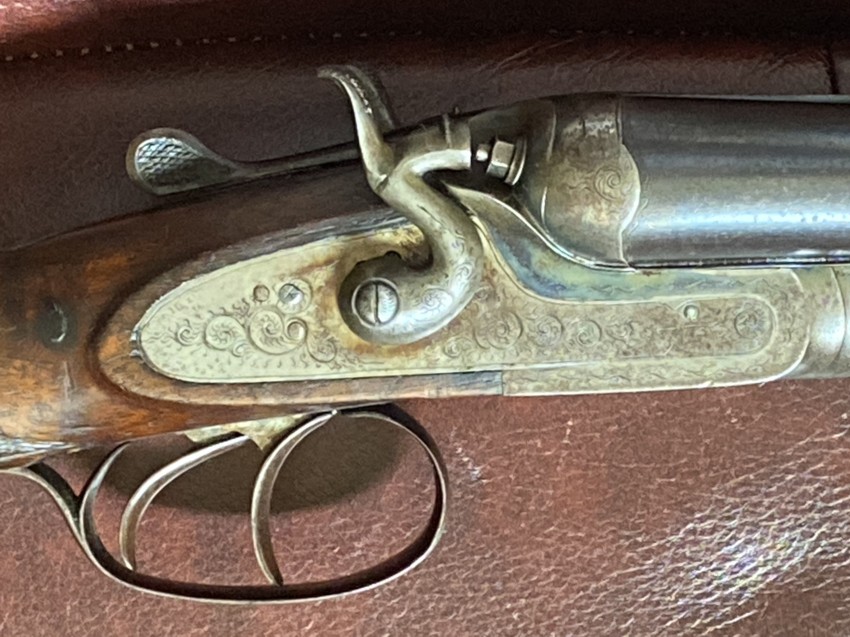
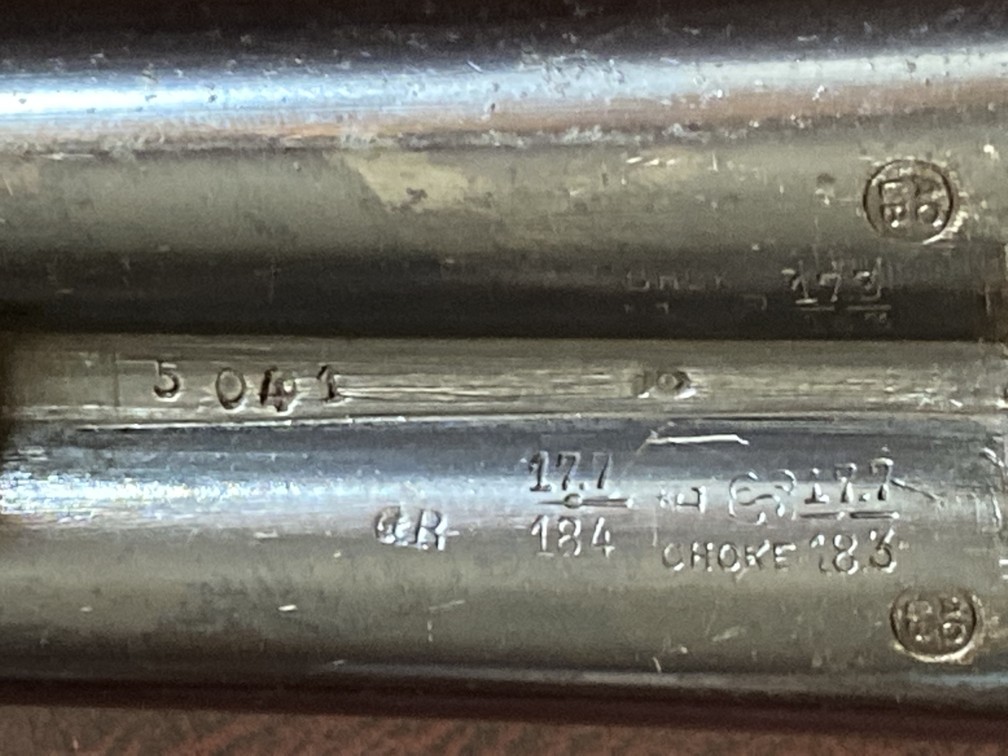
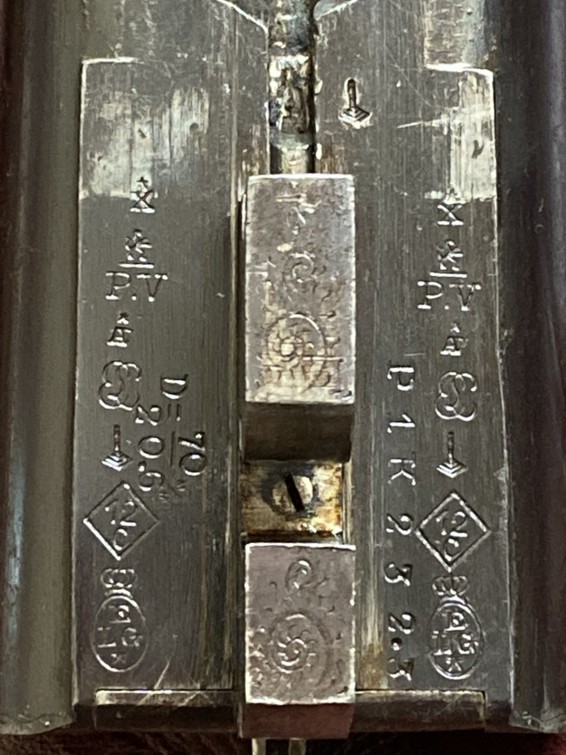
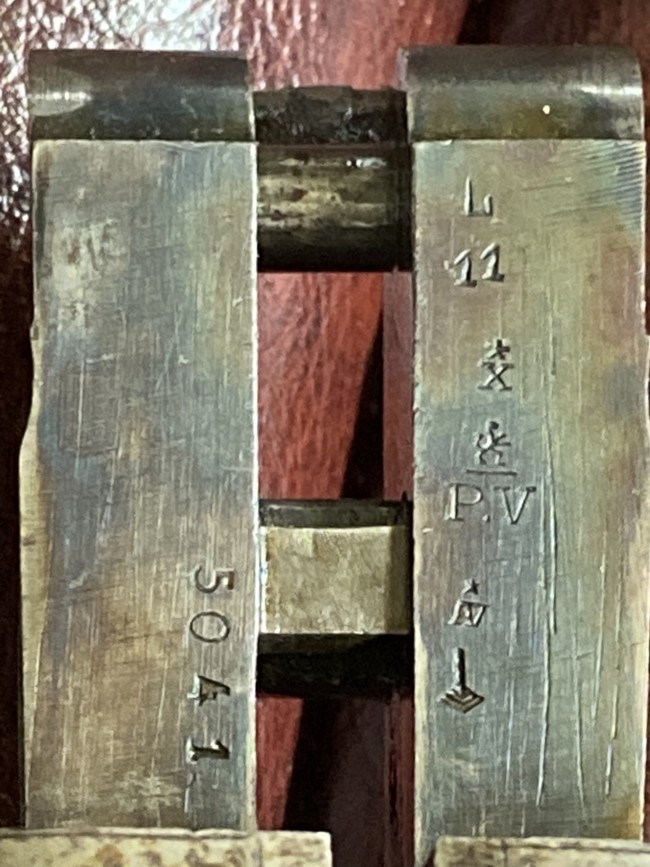
Lhermite & Bruyninck
This request for research is particular although it is exact that the arms manufacturers of Liège diversified when the orders of weapons were not enough any more to make them live.
Thus much of them had one second activity: the toys, the bicycles, the motor bikes and even cars (PIEPER, NAGANT, FN). Others held a trade of food, tobacco and even a bar.
This is why the manufacture of mills of fishing does not astonish me.
However this additional activity hardly appears in documentation!
In answer to your questions, I traversed my catalogues arms manufacturers but fishing is quite thin.
Could LB in an oval be LHERMITE & BRUYNINCK but the mark differs from yours by the thick bar under the L. I’m unaware of if this firm manufactured mills?
GG
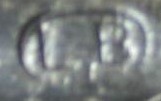
Mark on weapons
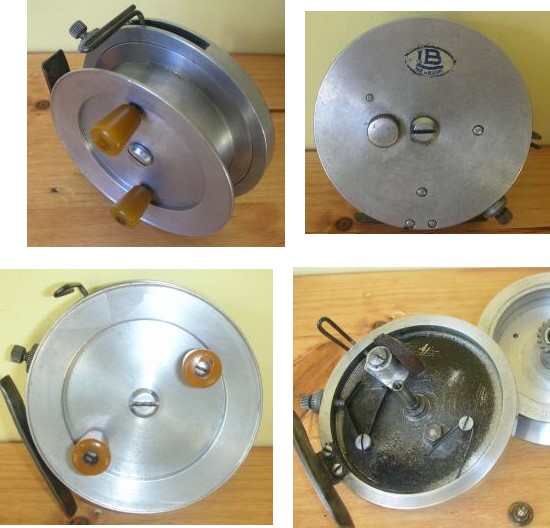
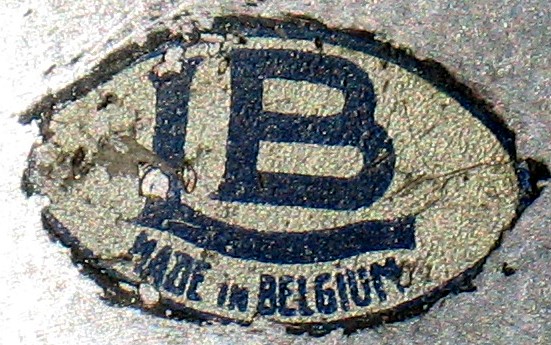
LHERMITTE & BRUYNINCKX
Shotgun with unrifled bores and juxtaposed barrels, locks hammerless and key top lever. The stock is cut with English.
Letter “e” : yearly letter of 1926 (manufacture)
Other markings
SIEMENS-MARTIN STEEL: it is of course about the type of steel used to forge the barrels.
L B in an oval lying: mark of the manufacturer of guns LHERMITTE & BRUYNINCKX, on which I currently do not have any information and which was probably of the valley of Vesdre (Nessonvaux) close to Liege.
Manufacturer
The manufacturer of the rocker and platinums not having obviously left any mark on the weapon, it will remain anonymous. That was often the case in arms manufacture inhabitant of Liège.
GG